

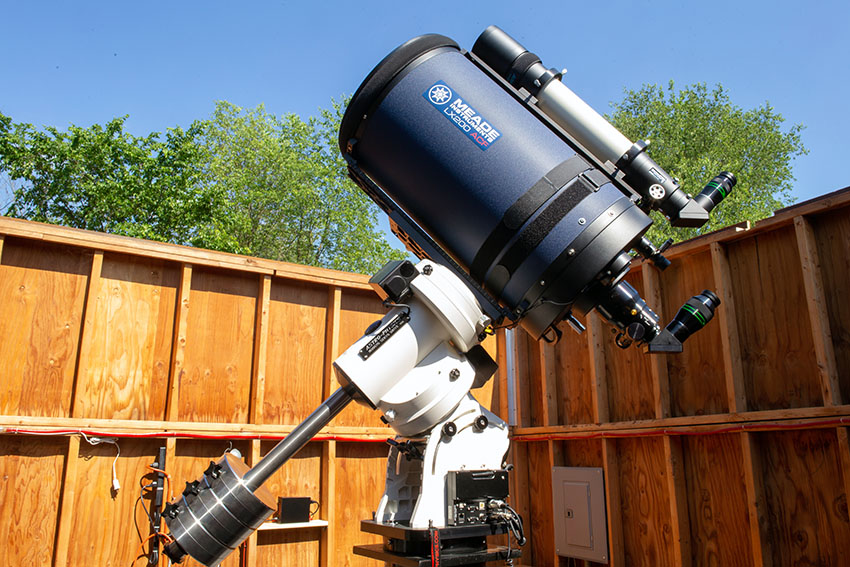
The Leonard James Ashby Telescope is composed of two instruments. The largest is a 16-inch f/10 Schmidt-Cassegrain telescope (SCT) built by Meade Instruments. Since their debut in the 1960s, SCTs have become very popular among amateur astronomers and small observatories since they are compact for their given aperture. Indeed, the 16-inch SCT from Meade is the largest SCT commercially available today and the largest aperture that can comfortably fit within Owl Observatory and still have room for members, students, and the public.
To avoid the image shift that is common to Schmidt-Cassegrains, we have opted for a Starlight Instruments 3-inch Dual Speed Feather Touch Focuser for ultimate performance. Feather Touch focusers boast ultra-smooth course and fine focus knobs, which result in absolutely zero-image shift or slippage while focusing. The Feather Touch can also handle up to 17 pounds of weight, meaning it can accommodate any eyepiece or camera with ease.
![[Feather Touch Focuser]](images/feathertouch.jpg)
Feather Touch Focuser
![[SCT Corrector Plate]](images/corrector.jpg)
SCT Corrector Plate
![[GTOCP4 Control Box]](images/GTOCP4.jpg)
GTOCP4 Control Box
At a focal length of 4,064mm, the 16-inch’s field-of-view is too narrow to view or image extended objects like the Pleiades cluster (M45) or Andromeda Galaxy (M31). This is just one of the many reasons we chose the Tele Vue NP101is telescope to complement our SCT. The NP101 is a 4-inch (101mm) f/5.4 Nagler-Petzval apochromatic refractor. It contains four elements in all, which result in a flat field and views free of color aberrations that plague lesser refracting telescopes. The “is” designation (in NP101is) denotes that the instrument is a capable “Imaging System.” It is also an exemplary wide-field and planetary visual telescope. The NP101 also includes a Focusmate 2.4-inch dual-speed 10:1 focuser, which ensures this fine telescope realizes its full potential.
Both telescopes ride atop the Astro-Physics 1600GTO German Equatorial Mount. The 1600GTO is built from the ground up to be a precision observing and imaging platform while still remaining totally user-friendly. It has a total instrument capacity of 220-lbs. Combined, our two telescopes weigh approximately 80 pounds, so the 1600GTO ensures an ultra-stable platform. Its rugged design allows it to track and guide well past the meridian. This will allow members to perform a long series of exposures without stopping in the middle to flip sides. The periodic error for this mount is ±2.5 arc seconds, thanks to the high-quality Swiss DC servo motors that drive the mount. The mount can be controlled via the GTO Keypad or wirelessly using the observatory’s laptop computer loaded with Software Bisque’s TheSkyX.
Additional Equipment & Accessories
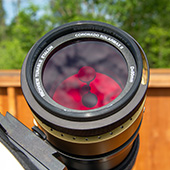
Coronado SolarMax II 90mm Hydrogen-Alpha Filter
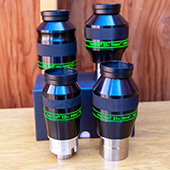
TeleVue Eyepieces

Thousand Oaks Deep Sky Filters
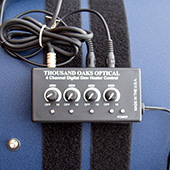
Thousand Oaks Dew Controller
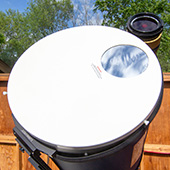
Kendrick Off-Axis Solar Filter
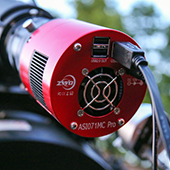
ZWO ASI071MC Pro Camera
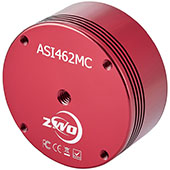
ZWO ASI462MC Color Planetary Camera
About Leonard James Ashby
Mr. Ashby was born on December 1, 1891, in Oldham, Lancashire, England, and later moved to Southsea, Portsmouth. In his youth, he apprenticed himself to a textile mill operator, and from 1903 to 1913, he studied nights and in his free time at the Oldham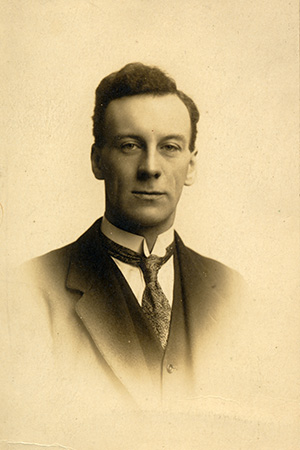 Technical
School. In 1911, he won a scholarship to Manchester University and continued, between terms, his studies at the Oldham Technical School. In 1912, he won a medal, one
of 20 so honored in an empire contest called, in English phraseology, the Whitworth Exhibition. His Bachelor of Science degree, with honors, in engineering was obtained
from Manchester University in 1915.
Technical
School. In 1911, he won a scholarship to Manchester University and continued, between terms, his studies at the Oldham Technical School. In 1912, he won a medal, one
of 20 so honored in an empire contest called, in English phraseology, the Whitworth Exhibition. His Bachelor of Science degree, with honors, in engineering was obtained
from Manchester University in 1915.
Enlisting in the British army in 1915, Mr. Ashby later became a lieutenant of the Royal Corps of Signals with service in France. While on leave, one of his former professors at Manchester University suggested he transfer to the Royal Navy, as the school of mines was looking for someone with his training. From then until the end of World War I and, in fact, until 1920, Ashby designed mines and supervised manufacturing operations when industrial concerns got into difficulties.
Mr. Ashby married Nona Gwendoline Wormald, of Oldham, in Crowborough, Sussex, on January 15, 1916. Perhaps their mutual interest in the same sport brought them together. Both were Olympic-class fencers. Apparently, they even qualified for the Olympic Games, but Mr. Ashby was wounded (stabbed) during practice and unable to compete.
The happy couple immigrated to the United States in June 1920. Settling in Kalamazoo, Mr. Ashby applied and obtained an appointment to the faculty of Kalamazoo College in 1921, where an engineering department was contemplated. That failed to develop, and he taught physics for three years. While at K-College, Mr. Ashby built and operated the first broadcasting station in the city. The radio station, WOAP, opened on January 3, 1923. Mr. Ashby left Kalamazoo College in 1924, which brought about the end of WOAP. With his teaching career now behind him, Ashby decided to start his own refrigeration installation business.
![[Ashby Fencing]](images/ashby-fencing.jpg)
Ashby Fencing
![[Ashby Headstone]](images/ashby_headstone.jpg)
Asbhy's Headstone
![[Ashby Mirror]](images/ashby-mirror.jpg)
Ashby's New Mirror
Like most amateur astronomers of his time, Mr. Ashby was also an amateur telescope maker (ATM) by necessity. Commercially made telescopes were quite expensive during this period. It should come as no surprise that Mr. Ashby, with his degree in engineering, had a completely equipped workshop in his basement. Even though telescope-making was the rule of the day, Ashby shared his thoughts on the hobby in an interview with the Kalamazoo Gazette that would resonate with any ATMer active today:
That’s the fun of it. Anyone can buy the things he wants to use, but to see them grow under his hands, that’s the
real kick in it. Then, when he puts the machine together and it works, it’s the thrill of a lifetime, repeated every time he does it.
Mr. Ashby also constructed an observatory at the top of his garage. A section of the garage’s roof slid back on rails to expose his telescope to the sky. Many of the earliest gatherings of the Kalamazoo Amateur Astronomical Association were held at “Ashby Observatory.”
In 1940, the Ashby’s moved to Ann Arbor, where Mr. Ashby became a student at the University of Michigan and worked as a Special Instructor of Physics from 1943 to 1944. He died unexpectedly on June 12, 1945, at the age of 53. All members of the Ashby family are buried at Mountain Home Cemetery in Kalamazoo.